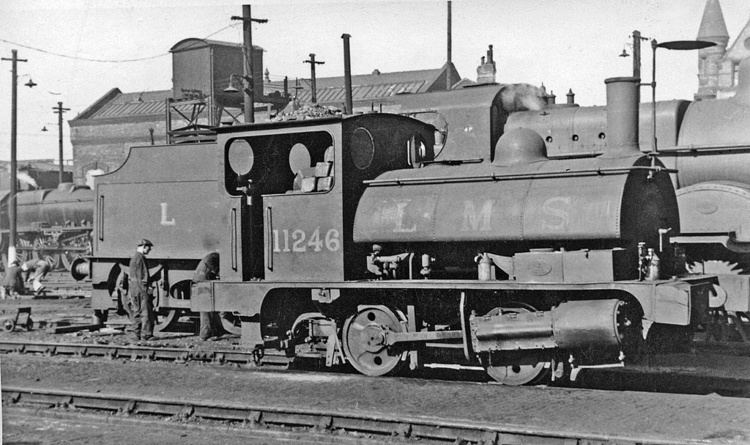 | ||
Locomotives of the Lancashire and Yorkshire Railway. The Lancashire and Yorkshire Railway Locomotive Works were originally at Miles Platting, Manchester. From 1889 they were at Horwich.
Contents
Constituent companies
The L&YR came into being in 1847 when the Manchester and Leeds Railway changed its name. Locomotives added to its stock before that date came from the:
As the L&YR, locomotives were taken into stock from the:
William Jenkins (Indoor) 1845–1867 & William Hurst (Outdoor) 1846–1854
Although Jenkins was the Locomotive Superintendent the early years of this period saw Hawkshaw specifying the locomotives. As Hawkshaw was not a locomotive engineer the resultant locomotives were not of the best and were hopelessly outdated long before they were withdrawn. Hurst left to join the North British Railway in 1854 and Jenkins continued on his own.
William Yates (Indoor) 1868–1875 & William Hurst (Outdoor) 1868–1875
Following the death of Jenkins responsibility passed to Yates as Indoor Superintendent and Hurst returned as the Outdoor Superintendent. Hurst retired in 1875 and Yates resigned. A disastrous fire at the Miles Platting works in 1873 led to the building of the new Horwich Works.
The official system of numbered classes was not introduced until 1919, therefore classes are listed here according to the number of the first locomotive built.
The Horwich era
Note: The class numbers below are those introduced by Hughes in 1919. Each can cover several similar varieties, e.g. all the non-superheated 0-8-0s are Class 30
William Barton Wright (1875–1886)
During this period the Horwich Works was under construction and apart from a few built at Miles Platting, engines came from outside manufacturers.
John Audley Frederick Aspinall (1886–1899)
From 1889 Horwich Works was completed and from that time all engines were constructed there.
Preservation
Eight locomotives survive, these being:
